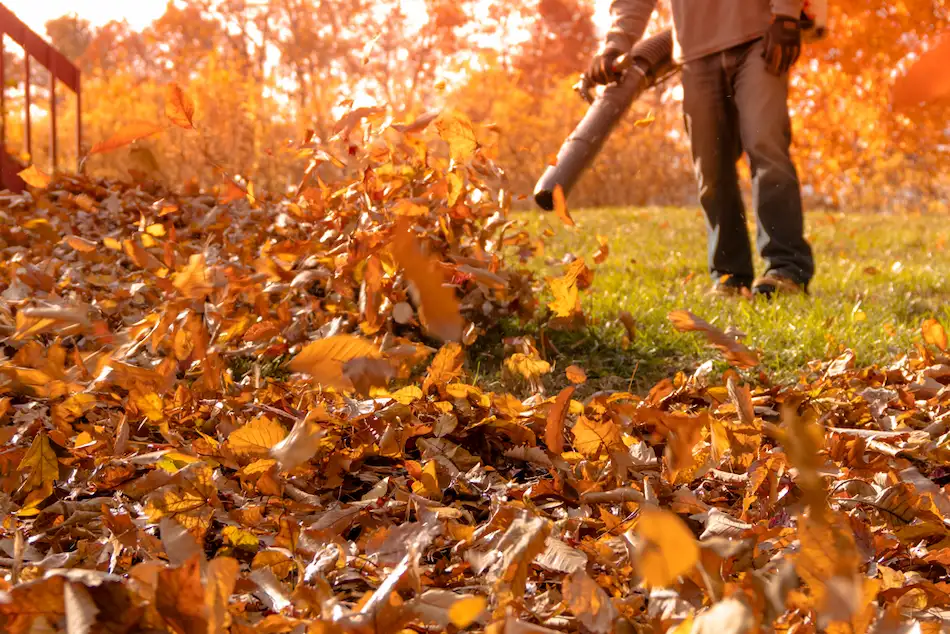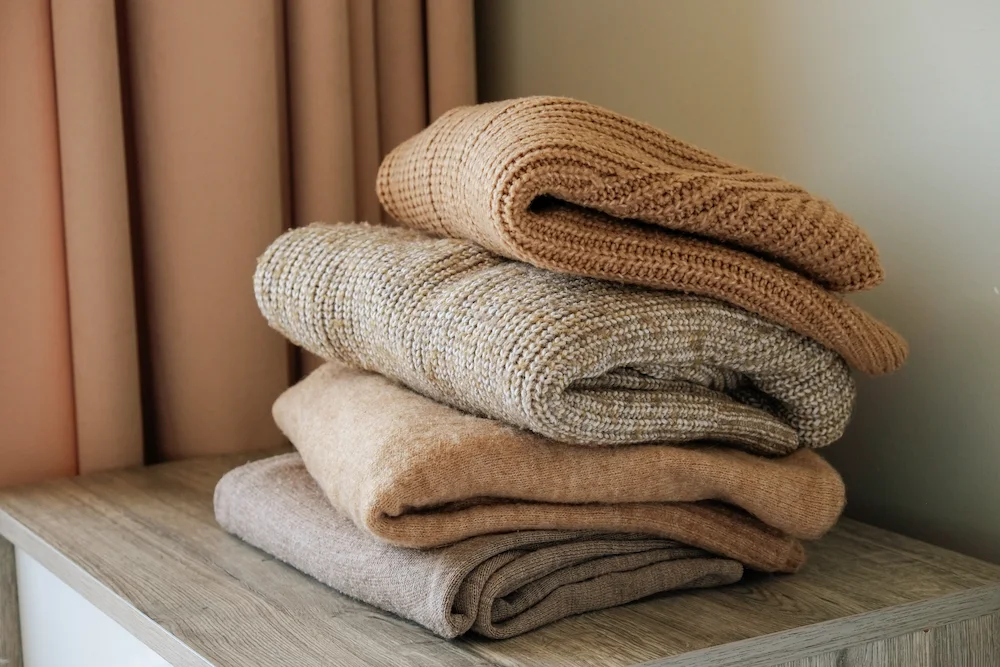Summary: Raking the leaves is a common chore in the fall, and it’s important to not let a leaf pile sit for too long. Critters love leaf piles for the food and shelter. This blog discusses the 5 most common leaf pile pests and the potential problems they can cause homeowners. The pests mentioned are: ants, spiders, centipedes, rodents, and beetles. Each pest’s section describes their favorite aspects of leaf piles and the ways they can cause trouble for homeowners. Pointe Pest Control provides thorough services to keep homes and businesses pest-free in every season.
Once the crimson and tangerine leaves start falling in droves from their trees, we’re officially in autumn. As beautiful as this natural phenomenon is, it creates a major chore for homeowners who have trees in their yard. Piles of leaves that sit for weeks at a time can cause quite a few issues.
You might be surprised at just how many critters live inside stagnant leaf piles. It doesn’t sound that bad, but everything sours when those pests want to use your house as their winter shelter! Let’s jump into the world of leaf pile pests to learn about 5 infamous pests and the potential problems they may cause for you later.
Ants
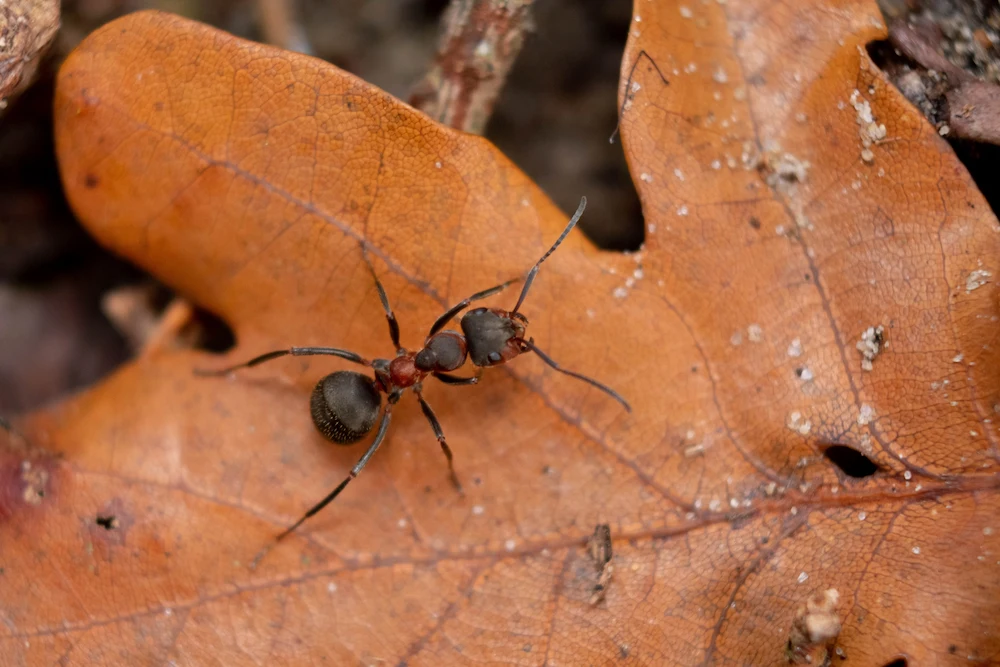
Ants are known for ruining our picnics and invading our kitchens, but they also enjoy living in idle leaf piles. Since they live in places where their 3 basic needs (food, water, and shelter) are met, a damp leaf pile fits the bill. Leaves and organic debris form a secure cover for their growing colony to hide under, especially as the weather becomes chilly. Ants can find other food sources in their leaf pile since they eat anything sugary or protein-filled. As the autumn rain rolls in, ants have no shortage of water for their colony.
Possible Problems:
- Infestation: The winter frost leads ants to seek out a better shelter that will protect their colony and, most importantly, their queen. These tiny pests can use the smallest openings to invade a house or building, especially if they smell food particles on the other side.
- Other Pests: Ants are busy scavengers, but they are also hunted by carnivorous insects. Spiders, caterpillars, and beetles all eat ants. If you have an untreated ant invasion, there’s a chance that they’ll bring all the pests to the yard (and by yard, we mean your home).
Spiders
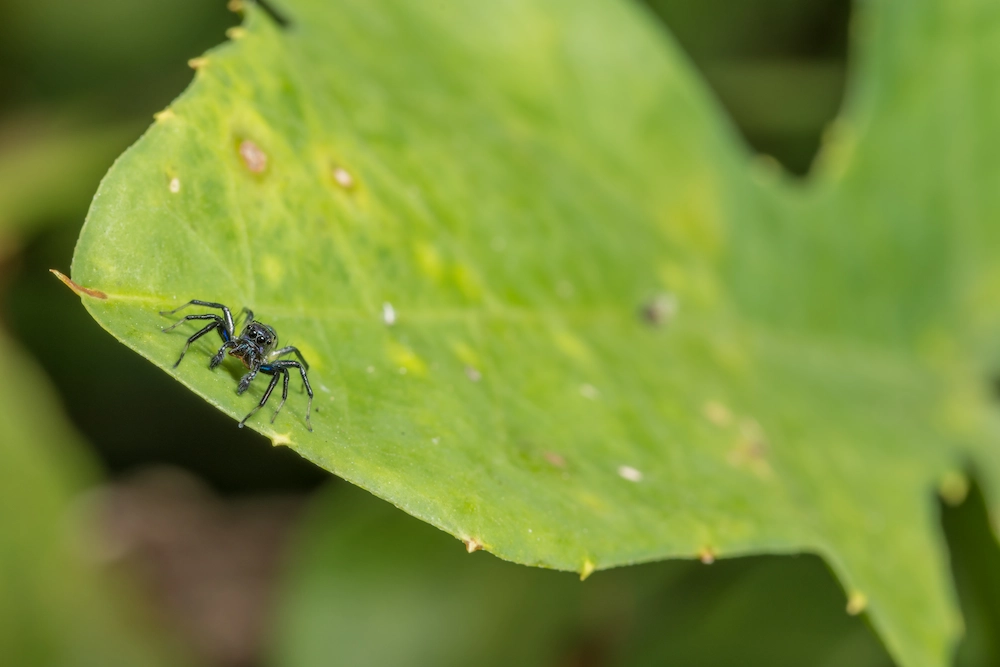
It’s no surprise that spiders enjoy living in leaf piles, seeing as how we find tons of insects in these mounds every year. Web-building spiders, like black widows and garden spiders, wait for their unsuspecting prey to fall into the sticky trap. Hunting spiders, like wolf spiders, go on a determined search for nearby insects. Spiders usually stay near the top of the leaf pile for convenience. But no matter where they hide, it seems like every leaf pile is guaranteed to have at least one spider, like the worst cereal box prize ever.
Possible Problems:
- Winter Shelter: Spiders don’t like the snow either! When the freezing temperatures set in, spiders would rather hide in a cozy shelter that has access to water and food. Spiders start trying to invade houses in the fall so that they’re prepared for the coldest season.
- Venomous Species: Spiders generally want nothing to do with us, but there are two species you really don’t want to meet: black widows and brown recluses. Both deliver venomous bites that can cause lasting symptoms, so please seek immediate medical attention if you’re bitten.
Centipedes
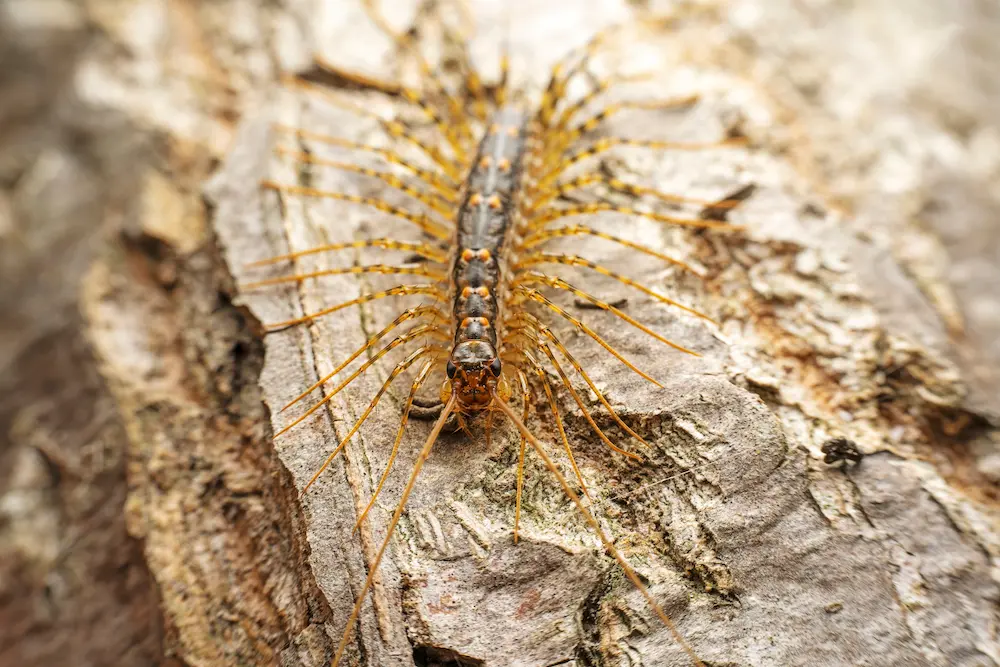
Centipedes have a falsely scary appearance. They look like creatures from a science-fiction film, but they aren’t a major threat to humans. Centipedes live in dark and damp spaces, and an untouched leaf pile is the perfect shelter. They’re nocturnal and stay on the ground, so they hunt their prey in the same dark spaces that they operate. Centipedes use their heightened senses to find food (aka other insects) amid the leaf piles because they can’t see. Since the colors of the leaves prevent insects from laying eggs on them, centipedes only dine on adult insects in the fall.
Possible Problems:
- Damp Spaces: House centipedes predictably love living in our homes, but only if they find extra moisture. They’re usually found in the bathroom, laundry room, garage, or basement for this reason. If possible, they prefer to live near other pests for the food.
- Bites: Similar to spiders, centipedes don’t want to be near us at any time. Their strong bite paralyzes insects, and there’s a chance they will bite you if you touch them. Centipede venom isn’t nearly strong enough to hurt us, so the typical result is just an irritated spot.
Rodents
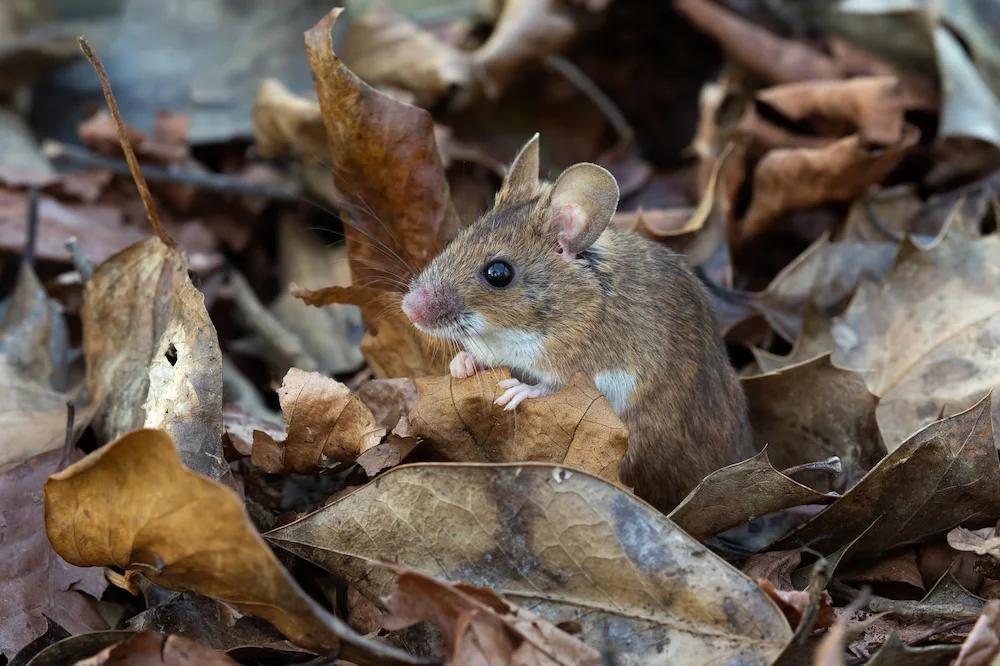
Rodents are definitely the largest leaf pile pests, especially when you compare them to the other critters on our list. Mice and rats prefer to live in dark, sheltered areas that provide a safe base in between their scavenging adventures. Since they’re omnivores, rodents have many food options near their leaf piles. Leaf litter, trash, insects, and fruit are some of their favorites. The small twigs in leaf piles are also great for their open-rooted teeth, so they have something to gnaw on all the time. As unnerving as it is, idle leaf piles are perfect for hiding all of those tiny rodent babies too.
Possible Problems:
- Winter Infestations: Rats and mice are possibly the most common winter pests since they enjoy the warmth of indoor spaces in the winter. They reproduce often and eat any type of food, so a rodent infestation grows very quickly once they’re inside.
- Contamination: Rodents are also some of the filthiest pests ever. They can carry the pathogens for over 30 diseases, which they transmit to us both directly (bites) and indirectly (tracks). Anything that rodents touch should be either sanitized or thrown out immediately.
Beetles
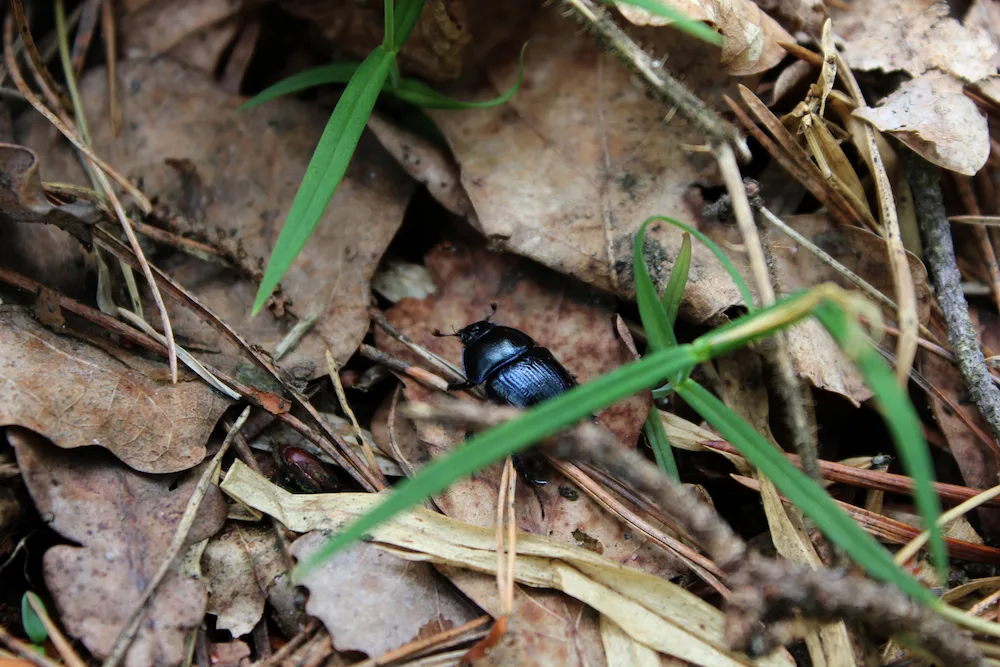
The general “beetle” name often refers to general insects that aren’t immediately obvious, like stink bugs and ground beetles. Beetles usually like to hide from danger in dark spaces, so leaf piles are ideal. Some beetles can fly, and they might make their way up to the leaf-filled gutters for more food sources. Each species deals with the cold weather in different ways, so some want to invade our homes and others prefer to stay outside. But beetles are content with their leaf pile shelters for now, thanks to the abundance of organic food sources.
Possible Problems:
- Invasion: You might’ve noticed a pattern with all of these pests. Beetles also need shelter for the winter, and our houses are their ideal place to overwinter. Since they’re great at hiding, beetles can stay indoors all winter if they invade.
- Lots of Eggs: Many beetle species prefer to lay their eggs in leaf piles so that their offspring has reliable shelter and food. But when those hundreds of young beetles are independent, they might see our homes as the perfect shelter for the winter.
“Leaf” Your Home In Good Hands With Pointe
The easiest way to eliminate leaf-loving pests is — well, getting rid of the leaves! Whether you use a rake or your hands (wear thick gloves!), clean up the leaves in your yard on a consistent basis. Also, make sure to clear the gutters of leaves and natural debris. Rodents and flies love clogged gutters, and the rainwater that can’t drain may lead to moisture damage. Remember: the sooner that leaves are cleaned up, the less likely they’ll hide pests.
Pest control services and leaf removal go hand-in-hand during the fall. Once the leaves are removed, the treatments can reach the pests they’re targeting. At Pointe Pest Control, our experienced technicians take care to treat every impacted area of your home or business. We inspect the property for all signs of pest activity, then create a customized treatment plan to eliminate your problem pests. Contact us for more information on our thorough services that protect your property year-round!
Citations
Bauer, S. (n.d.). Good question: Do you really need to rake all those leaves?. University of Minnesota: Driven to Discover. Available at https://turf.umn.edu/news/good-question-do-you-really-need-rake-all-those-leaves (Accessed on October 3, 2024).
Pests that love leaves. (2020, November 13). Maggie’s Farm Products. Retrieved October 3, 2024, from https://maggiesfarmproducts.com/blogs/bug-help/pests-that-love-leaves
Wasson, S. (2022, July 26). 10 pests commonly found in fall leaves. House Method. Available at https://housemethod.com/pest/10-pests-commonly-found-in-fall-leaves/ (Accessed on October 3, 2024).
Yong, E. (2009, April 15). Are red autumn leaves a warning sign to insects?. National Geographic. Available at https://www.nationalgeographic.com/science/article/are-red-autumn-leaves-a-warning-sign-to-insects (Accessed on October 3, 2024).


